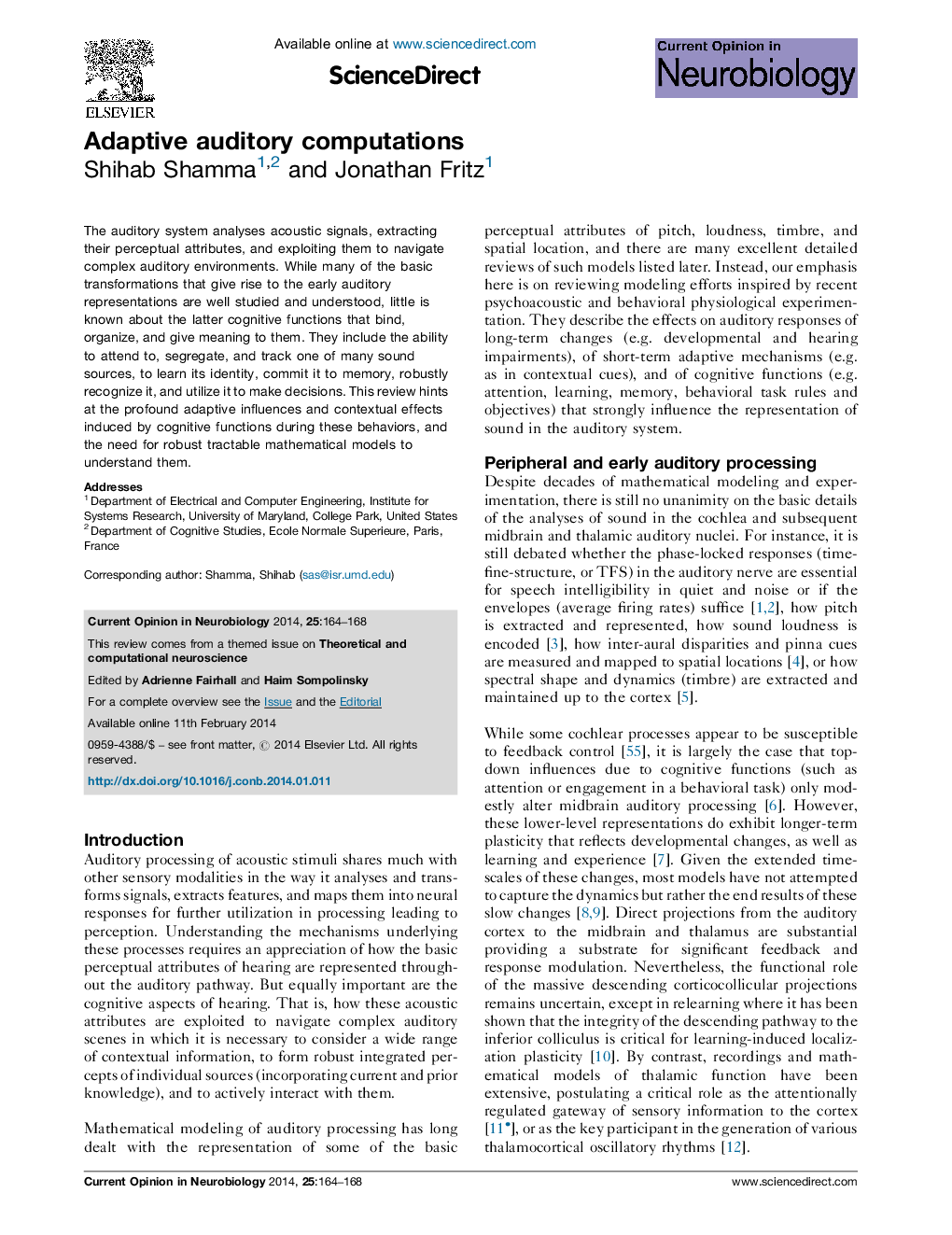| Article ID | Journal | Published Year | Pages | File Type |
|---|---|---|---|---|
| 6266566 | Current Opinion in Neurobiology | 2014 | 5 Pages |
â¢Models of early auditory processing explain how stable perceptual attributes emerge.â¢Pre-attentive Adaptive Coding and Stimulus Specific Adaptation enable dynamic representations.â¢Rapid plasticity enhances auditory processing in accordance with task objectives.â¢Perceptual segregation of simultaneous sources is essential in complex auditory scenes.â¢Auditory models are powerful in speech intelligibility, recognition, and detection.
The auditory system analyses acoustic signals, extracting their perceptual attributes, and exploiting them to navigate complex auditory environments. While many of the basic transformations that give rise to the early auditory representations are well studied and understood, little is known about the latter cognitive functions that bind, organize, and give meaning to them. They include the ability to attend to, segregate, and track one of many sound sources, to learn its identity, commit it to memory, robustly recognize it, and utilize it to make decisions. This review hints at the profound adaptive influences and contextual effects induced by cognitive functions during these behaviors, and the need for robust tractable mathematical models to understand them.
